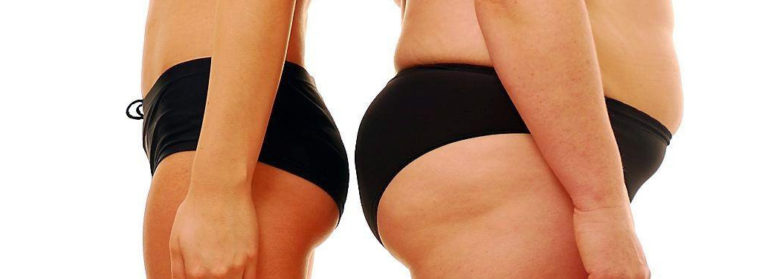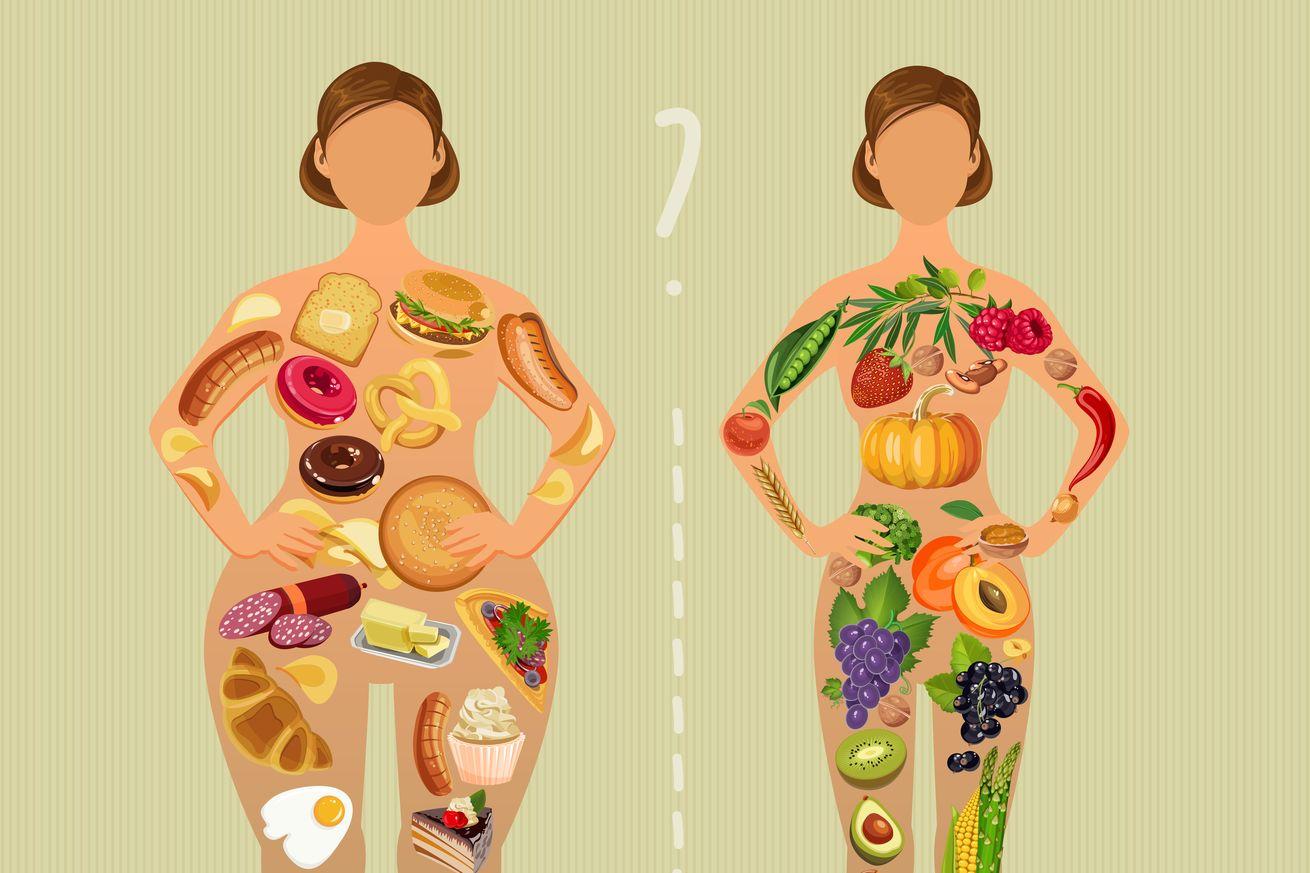How to eat right to lose weight?

How to eat right to lose weight:
Nutrition for weight loss plays a huge role. But the sphere of fitness deliberately supports a complex approach, which is simply not necessary for a sluggish newcomer.
In fact, losing weight is very simple, if you know the basic rules. Simple things work, and it does not make sense to try something complicated while the simple works.
The simplest steps on the planet for weight loss, in order of importance:
Learn the rate of calories and create a calorie deficit
Learn the norm of protein
Learn the fat rate
Learn the norm of carbohydrates
Step 1: Create a calorie deficit

Fat is stored energy. The only way to make the body use it is to create a need. The need for waste of supplies appears when energy ceases to arrive with food every day in sufficient quantities.
Energy is measured in calories, and all food brings calories. The organism takes as much as it needs, the rest is put aside for a rainy day. If a rainy day comes, stocks begin to be used.
So the only way to get rid of fat is to get less energy (calories) with food. This is the deficit of calories – alpha and omega of weight loss. You can eat nutrition as you like, right and clean, but if you do not have a calorie deficit, i.e. you get more than you spend, you will not lose weight. Read more about the energy balance here.
There are many different ways to create a calorie deficit.
1. The most obvious is to simply reduce the total amount of food you are accustomed to. That is, all the same, but half as much. Less food – fewer calories, and it works great.
2. You can change the quality of food: replace fatty foods with fat, fatty meat – lean. Sugar substitute for sweeteners. Dietary products are more difficult to overeat. And here, not the quality of food and special “clean” foods are the cause of losing weight, but the calorie deficit created by them.
3. Another way is to start eating more protein and less fatty and carbohydrate food. Protein food (meat, poultry, fish, cottage cheese) is good for savoring and controlling appetite. And this is again the issue of calorie deficit: not the protein has magical fat burning properties, but the calorie deficit created with it.
4. Do not change food, but increase physical activity, that is, again create a calorie deficit, only, unlike previous approaches, not reducing the “arrival”, but increasing the “expense”. The problem is that the number of calories that can be spent on training, the beginner is small. The only people who can burn tons of calories in training are experienced athletes, but they usually do not need it. Beginners do not burn as many calories as simulators and different wrist devices show. Therefore, limiting calories in food and increasing activity will work best.
5. The most difficult for a beginner, but the most accurate and quickest-yielding method is to count calories and maintain a food diary in any application for a smartphone. Here you can afford a variety of products, and even a little harmful every day, if everything fits into the daily calorie rate.
People who lose weight without counting calories, and oppose the energy balance, still lose weight with the help of energy balance. To lose fat, you have to spend more or eat less. Most likely, this is not what most people want to hear, but it is so.
How many calories do you need?
In general, 10-12 cal / lb is a good starting point for fat loss (in order to convert your weight to pounds, multiply it in kilograms by 2.2).
Note: this is just a starting point, and calories should always be adjusted based on real changes. Some people with a high level of activity may need more calories for weight loss, and those who lead a sedentary lifestyle – less. In today’s world, most people have a very low level of daily activity (office, work at a computer, a car). Some particularly inactive people may need only 8 calories per pound.
Do not overestimate your daily activity. We all move very little, and standard three-time workouts a week do not cover that minimum of daily activity that everyone needs.
Step 2: find out the protein norm
After the total number of calories, the most important aspect of losing weight – there is enough protein.
First, the protein protects against loss of muscle mass, and muscle protection is the main goal on the diet after losing fat, otherwise thin, but the person left without muscles will look like the former, but in miniature.
Secondly, the protein permanently creates a feeling of satiety. It is digested and absorbed for a long time, helps to control the level of glucose in the blood. This means that the feeling of hunger will not come sharply and strongly.
In general, people with large excess weight tend to lose less muscle mass than lean ones, so they do not need a lot of protein to support muscles. As soon as a person starts to become slimmer, the requirements for protein amount increase. An additional factor is activity: regular exercise also increases the protein’s rate.
Athletes have long been using a recommendation of 2.2 grams of body weight on a diet, and this is a good starting point. But, as noted above, slim athletes on a diet should increase the amount of protein, and here 3.3 g / kg per weight of dry body weight (body weight minus the weight of fat) can be a good option. To do this, you need to know your percentage of fat, subtract it from the total weight, and all calculations do already on the resulting “fat-free” weight
For people who are overweight and without activity (or with minimal activity), a starting point of 2.2 g / kg may also be sufficient.
Step 3: find out the fat rate
Pay special attention to fat is for several reasons.
First, to provide the body with a sufficient number of essential fatty acids (omega-fats), which are very important for health. They reduce inflammation, improve the sensitivity of cells to insulin and can help in controlling appetite. And if omega-6 fats are supplied in sufficient quantities with food from vegetable oils, then omega-3 fats are almost all in short supply. At the same time, omega-fats of linseed oil are absorbed very poorly, so if you eat a little fatty fish, it makes sense to think about supplements.
Secondly, fat-free diets are very difficult to observe because of the constant strong sense of hunger and lack of taste. Fats make the food tastier. And, like proteins, they prolong the feeling of satiety, slowing the emptying of the stomach. Studies have shown that a moderate amount of fat keeps the blood glucose level more stable, and, apparently, it is also related to a slowdown in the emptying of the stomach.
Sources of fats: oils, nuts, seeds, fatty fish, avocados, olives and olives
The starting point for fats: 0.48-0.72 g / kg body weight.
Step 4: Carbohydrates
Calories, proteins and fats are the three most important aspects of a diet. After determining the norms of calories, protein and fat, the remaining “free” calories account for carbohydrates. That’s where the diet becomes more complicated: the amount of carbohydrates depends on the level of activity, sensitivity to insulin, personal preferences.
An active person needs more calories (and hence carbohydrates), less active – less. A slender person on a diet can eat more carbohydrates (2-4 grams per kg of weight), a person with obesity – less because of a poor sensitivity to insulin (but not less than 100 grams per day).
All the rest – the time of food intake, the combination of products among themselves, the number of meals, supplements and dietary supplements – plays a very small role.